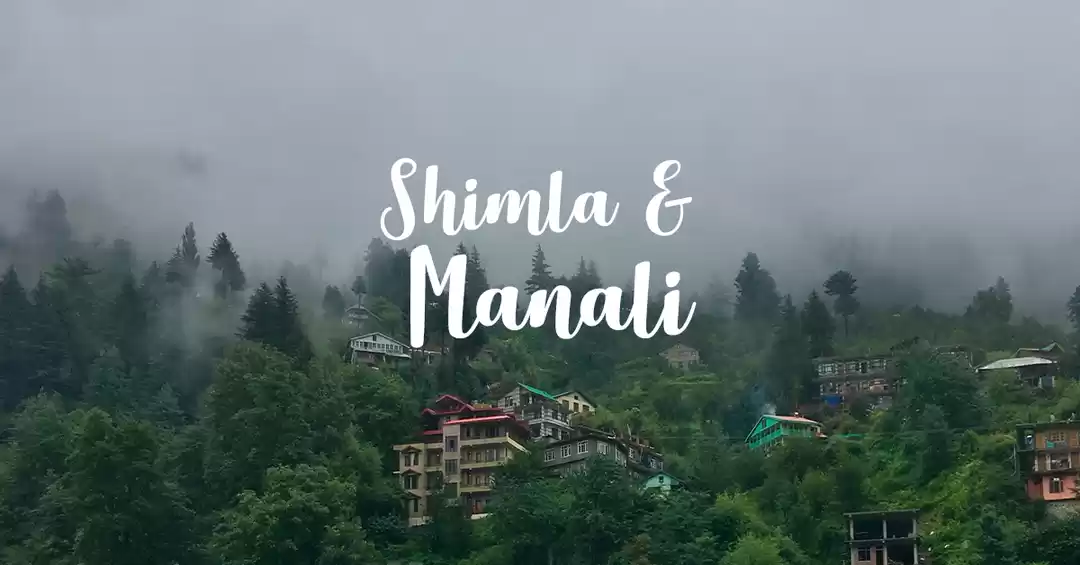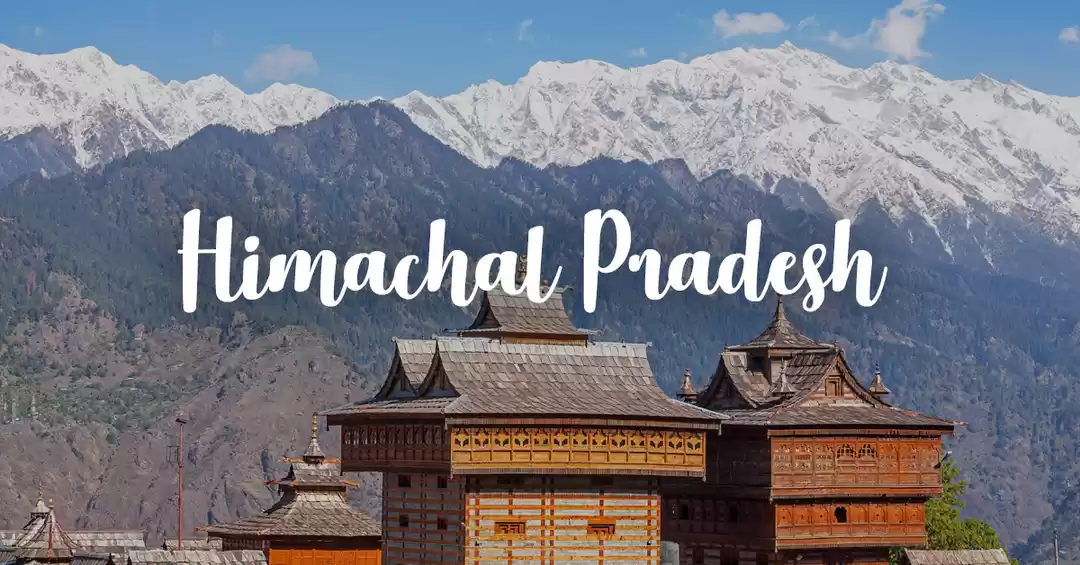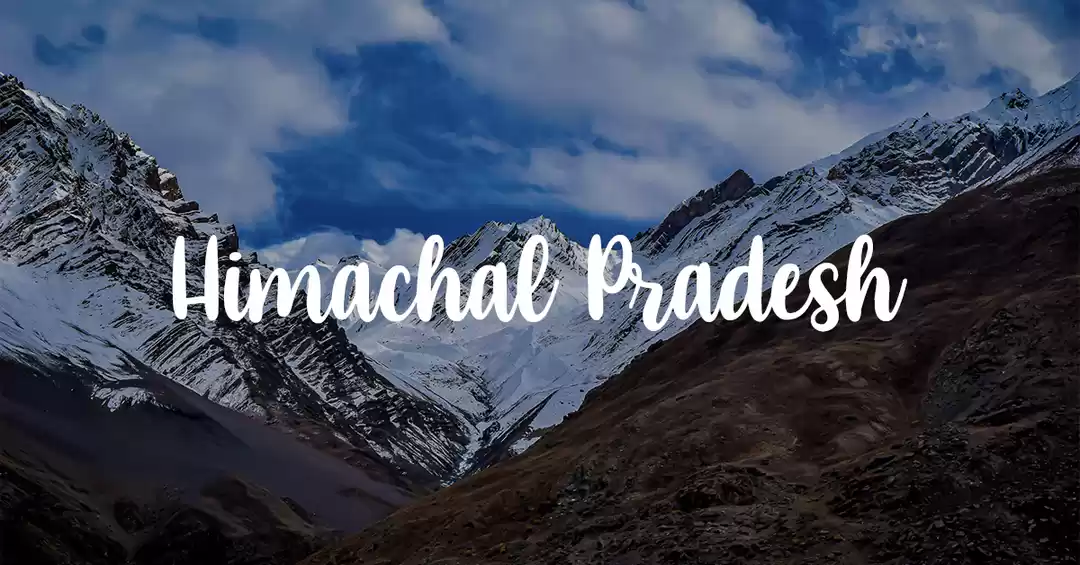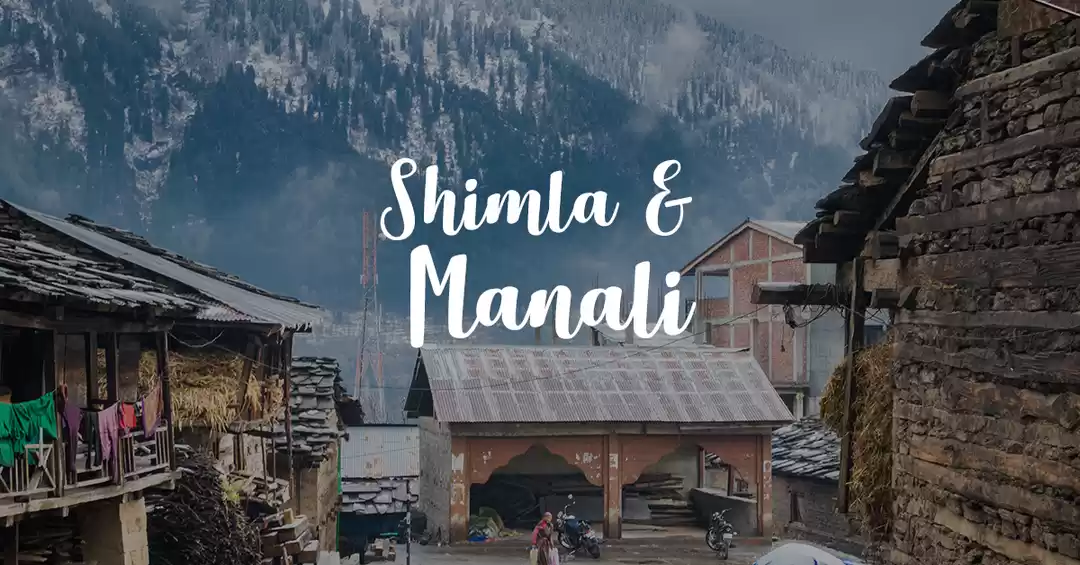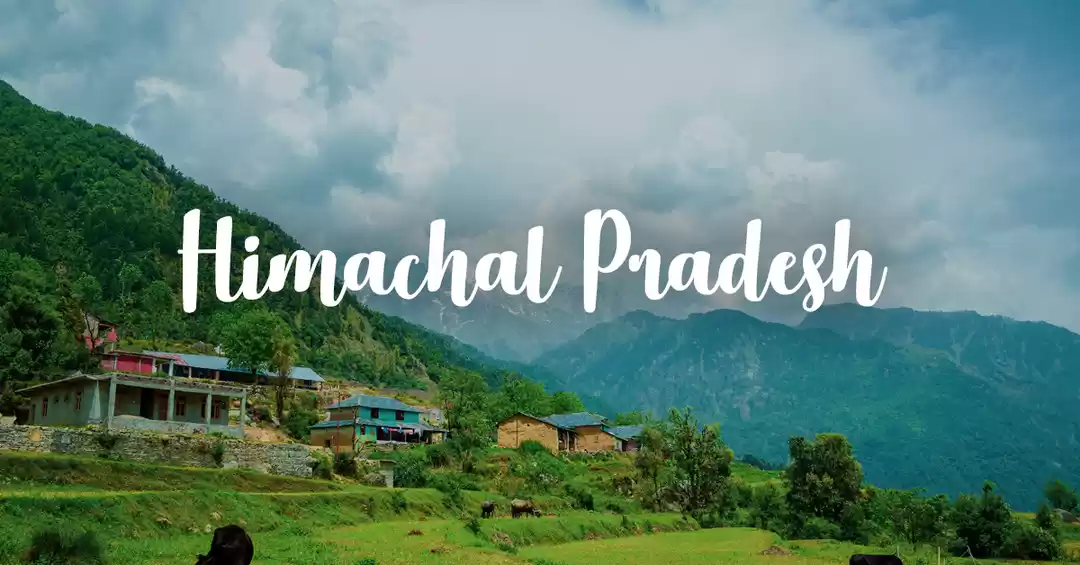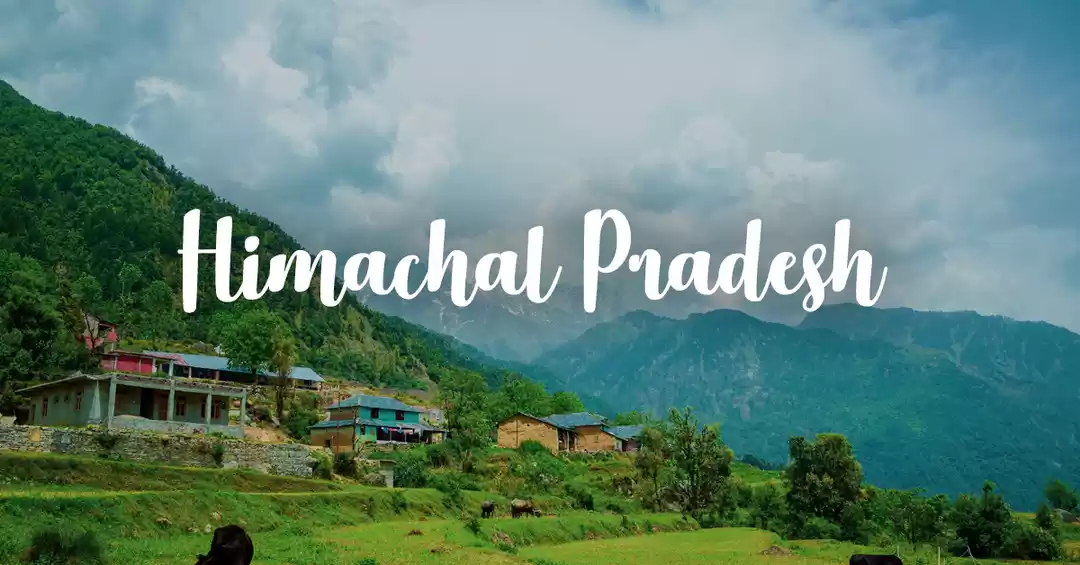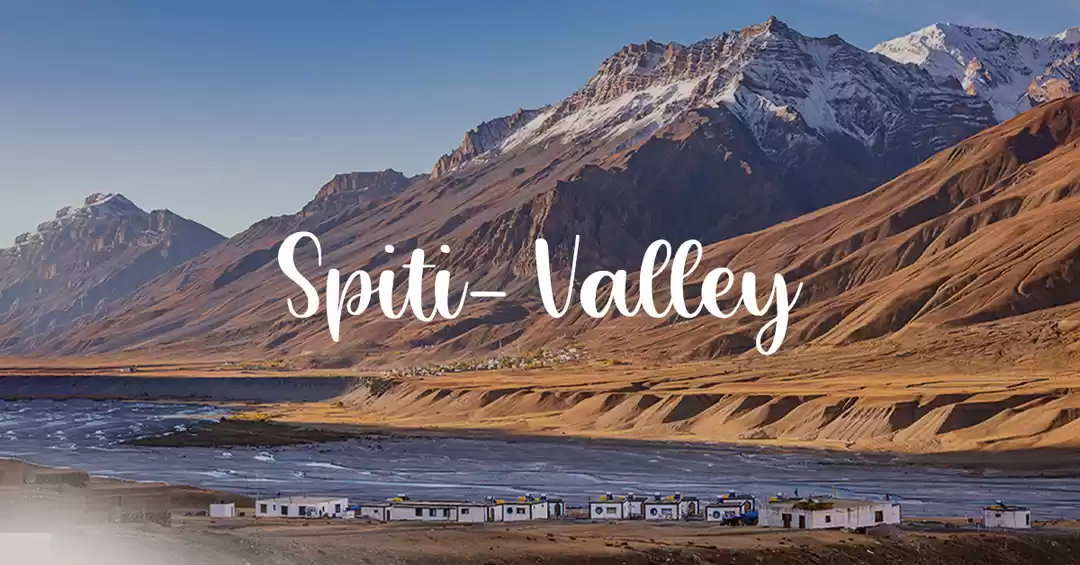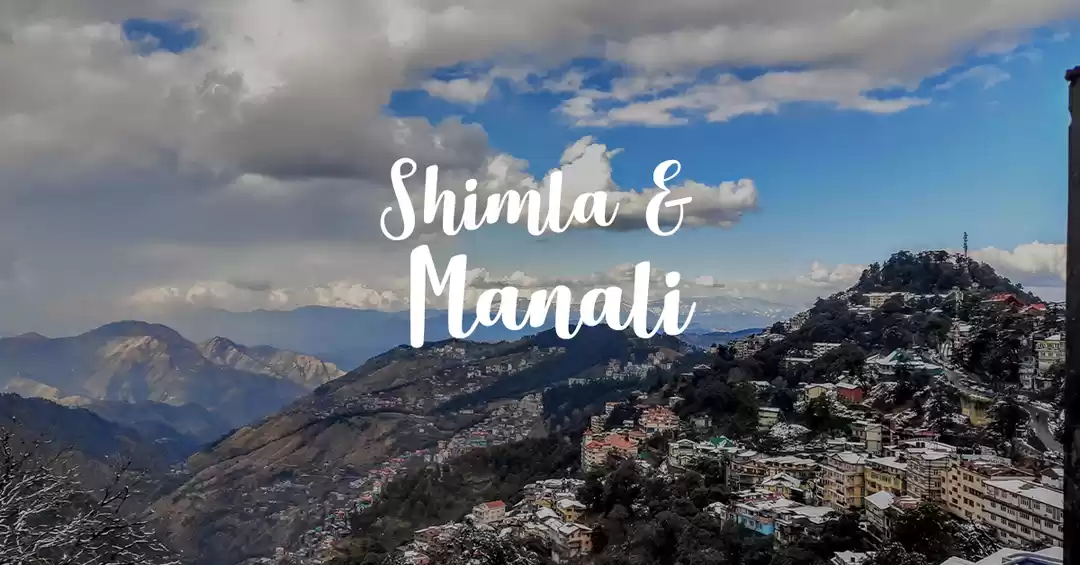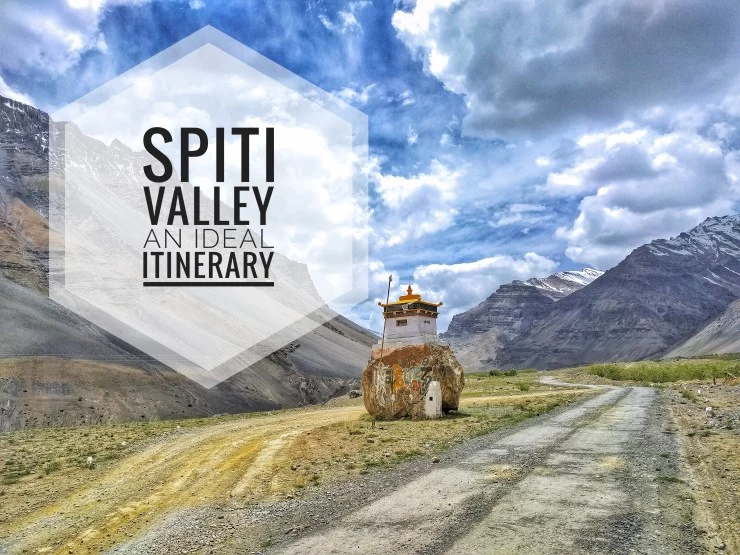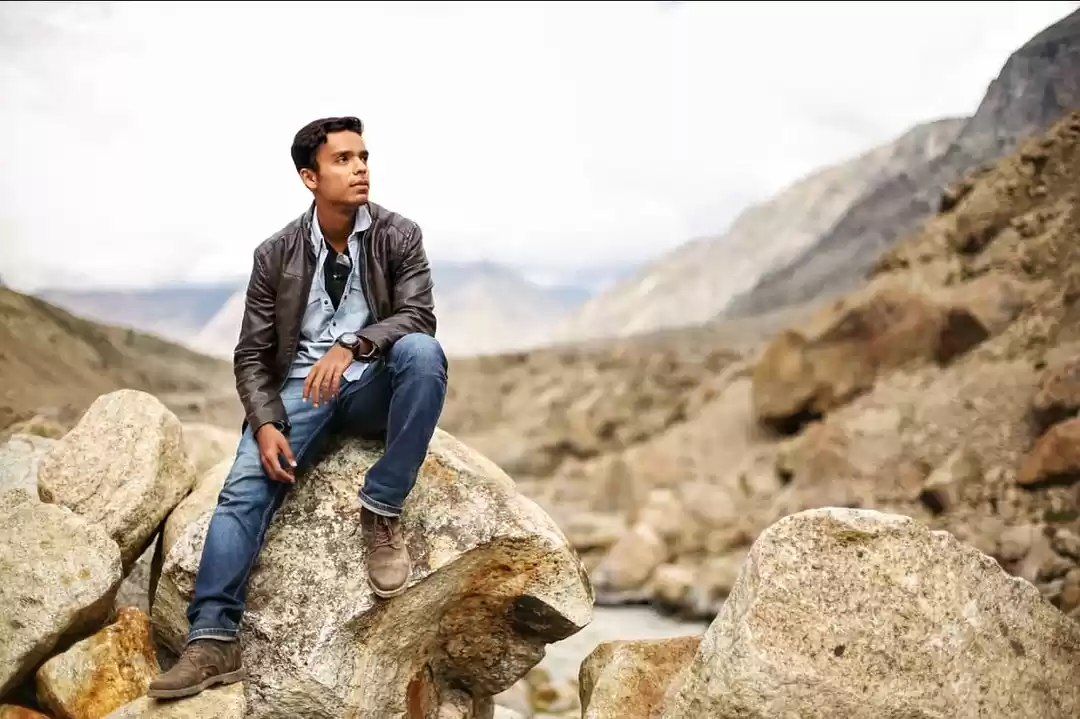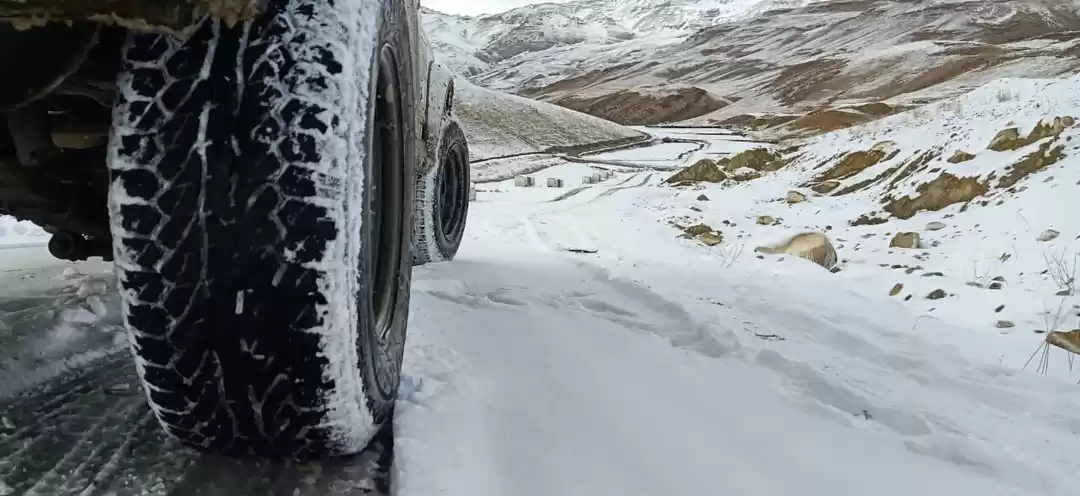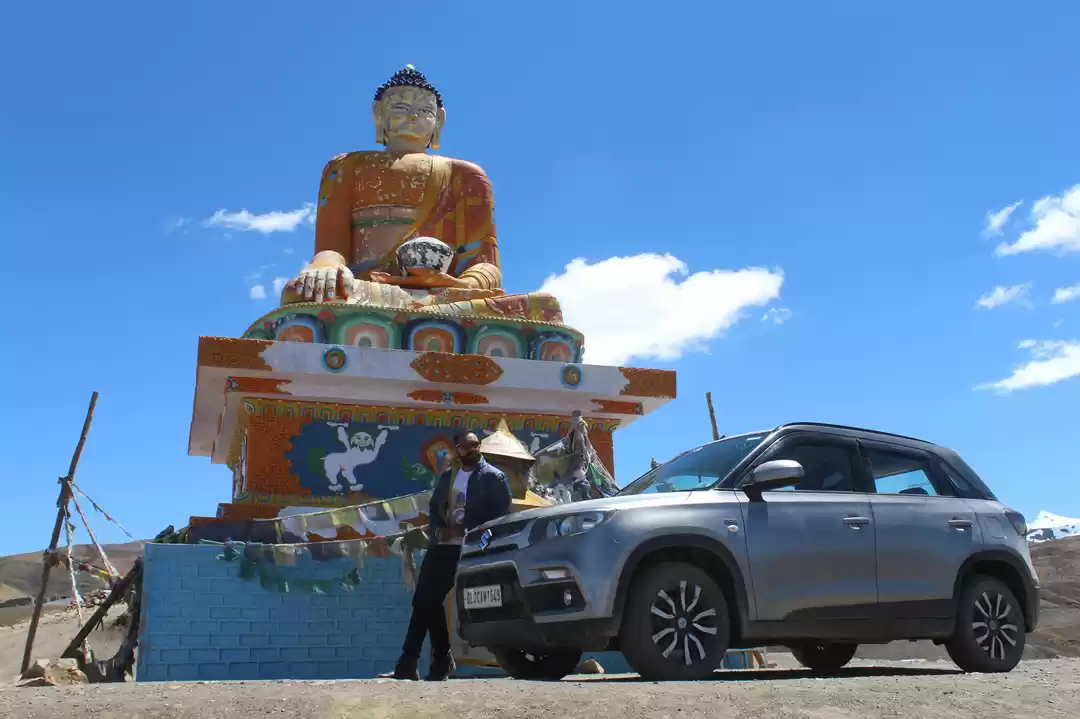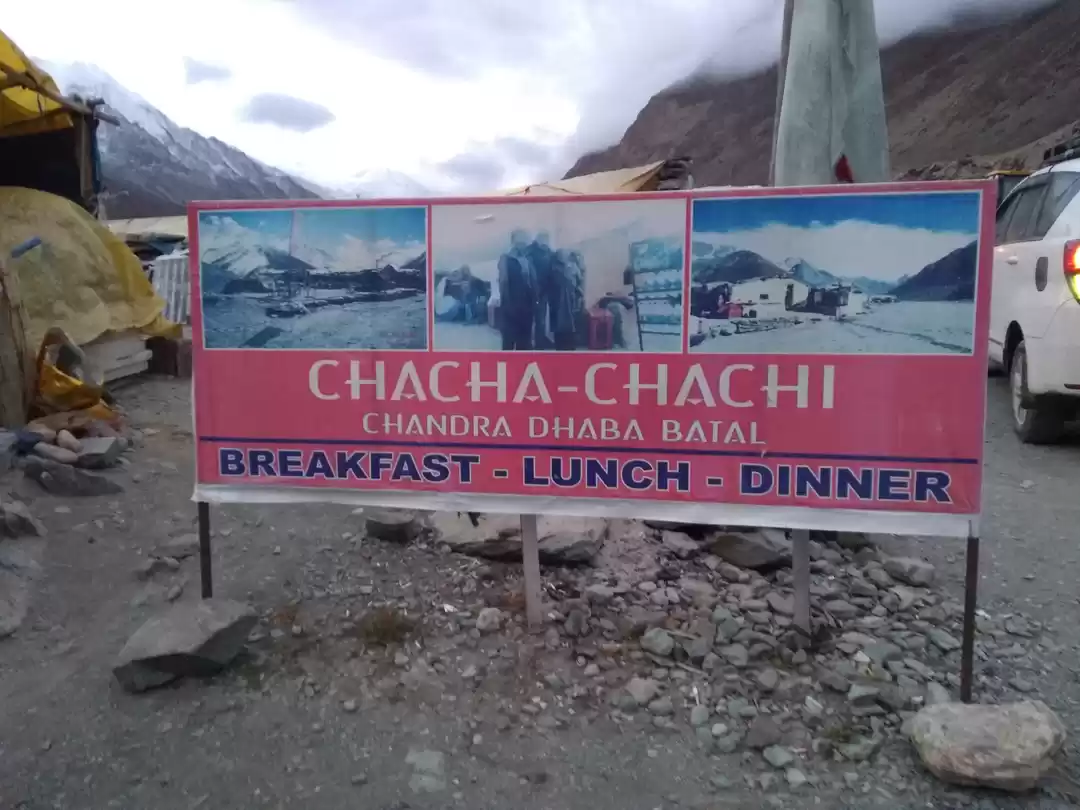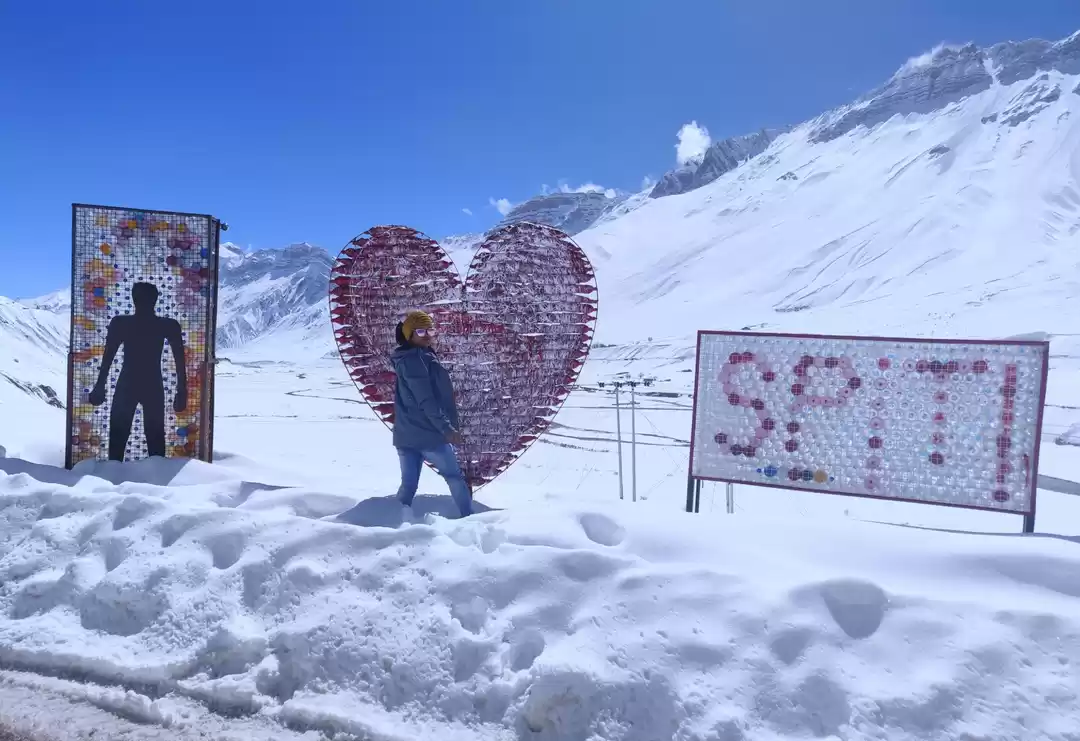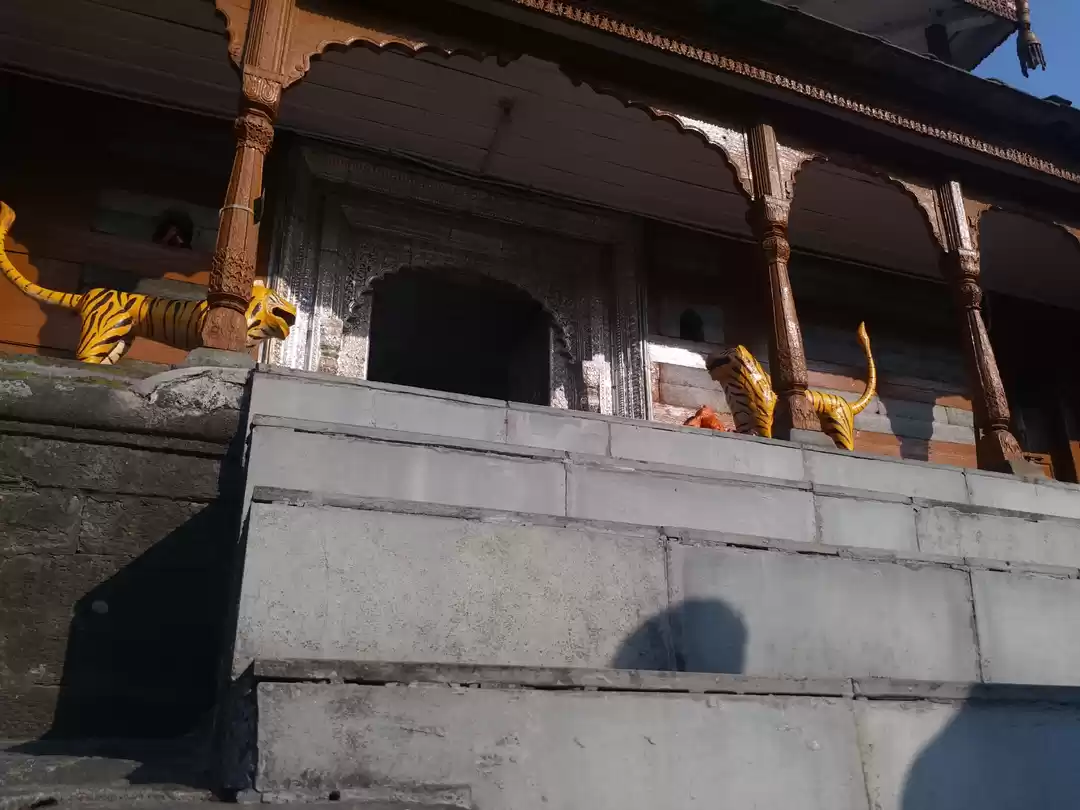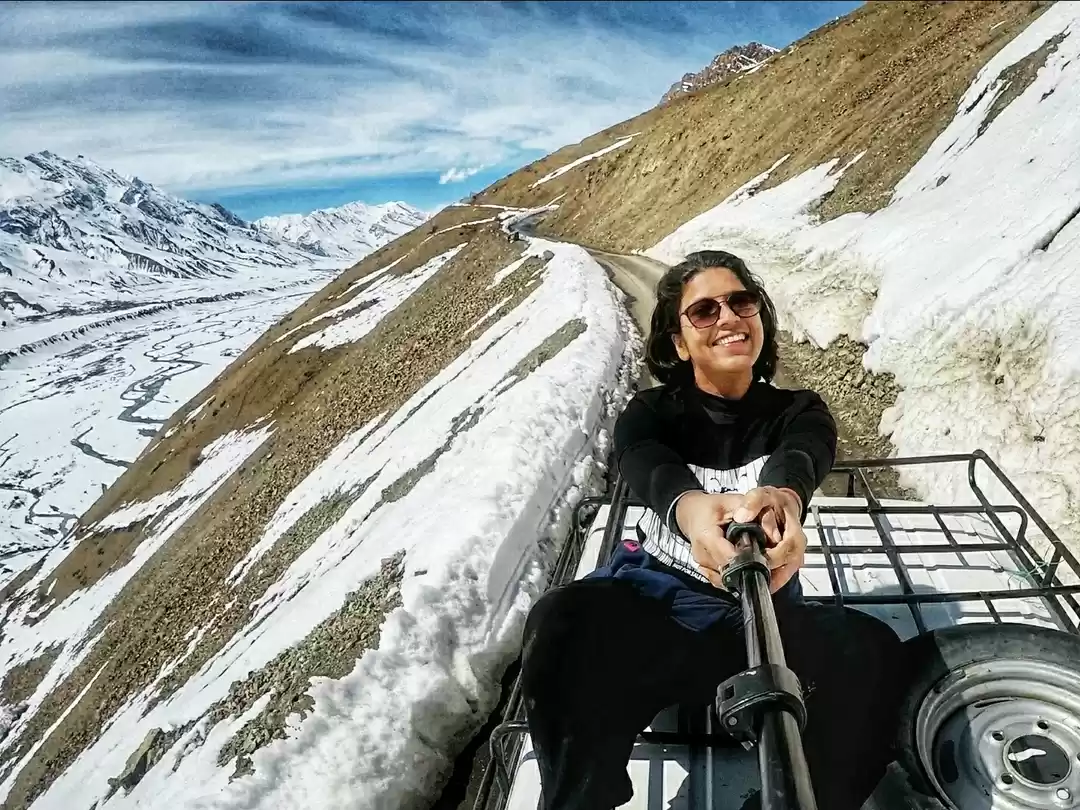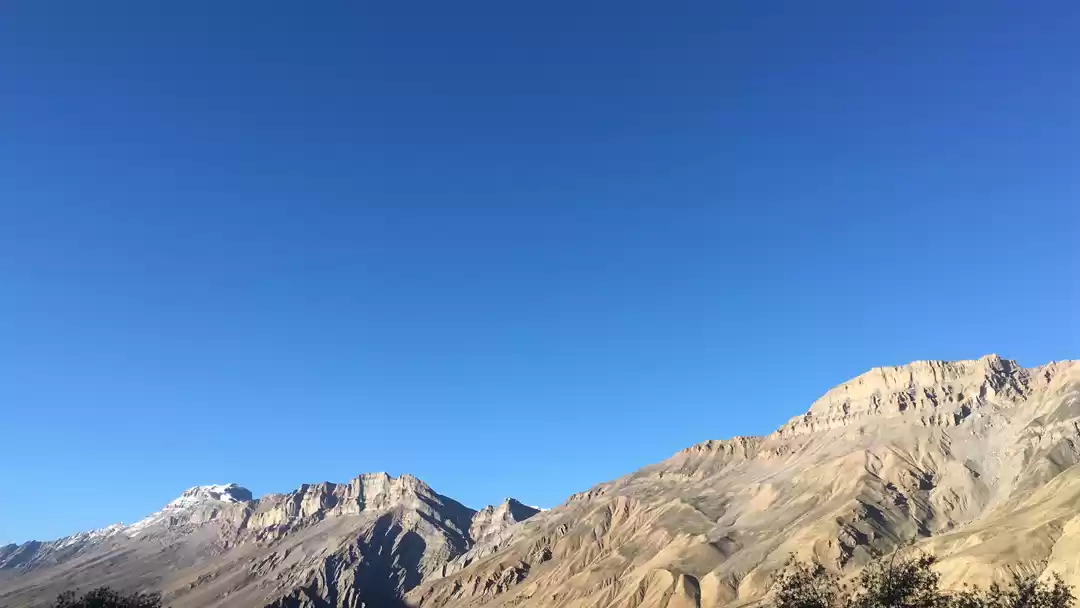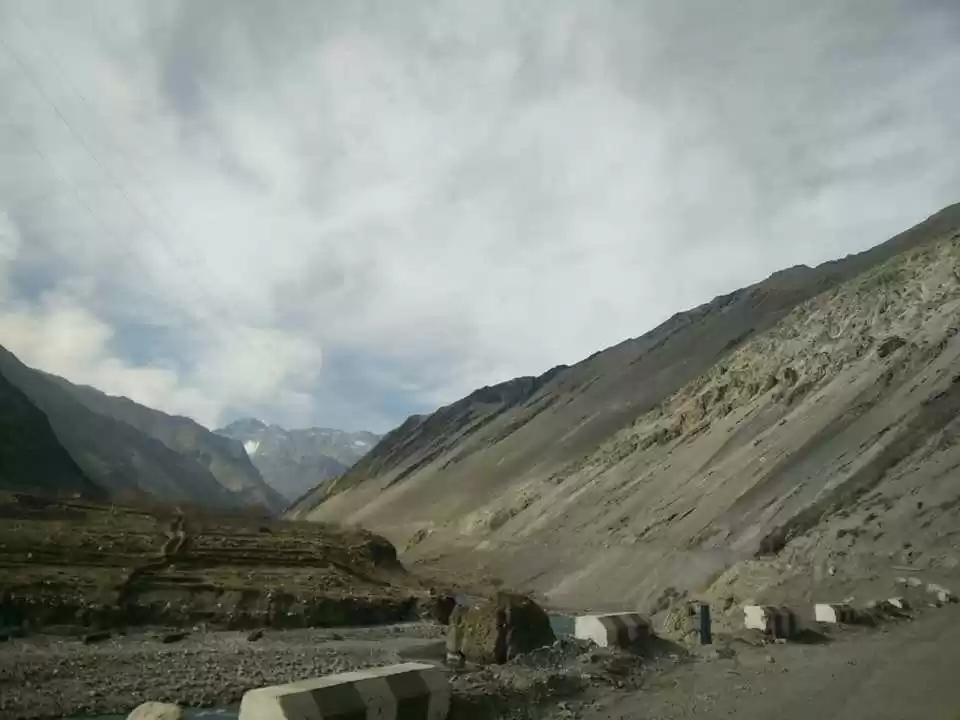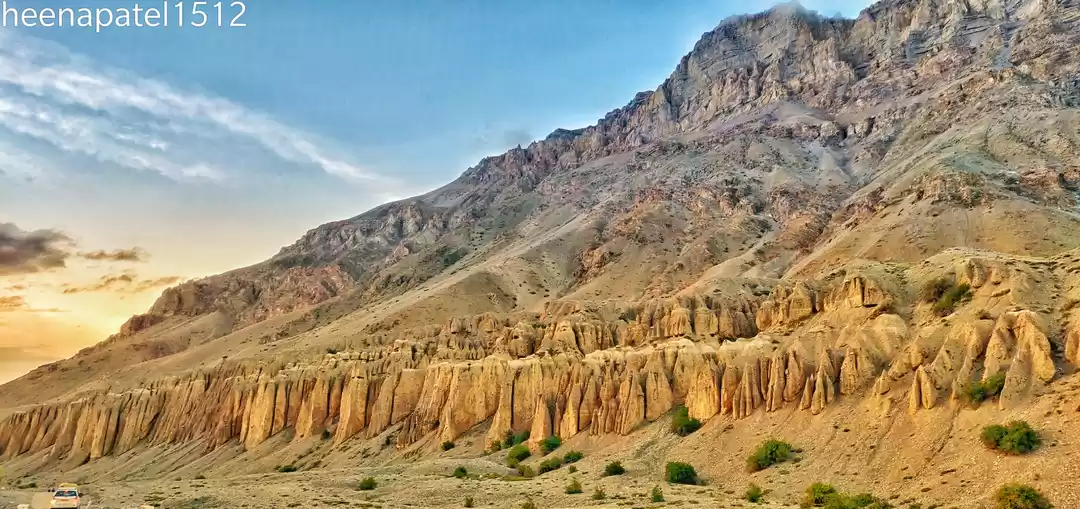

Key Monestary
Places to See in Spiti Valley: Chitkul, Kalpa, Nako, Tabo, Dhankar Monastery, Mud Village (Pin Valley), Kaza, Key Monastery, Kibber, Hikkim, Langza, Kunzum Pass, Chandra Taal
Spiti valley Itinerary
Day 1: Gurgaon to MashobraDay 2: Mashobra to ChitkulDay 3: Chitkul to KalpaDay 4: Kalpa to TaboDay 5: Tabo to Mud Village (Pin Valley) via Dhankar MonasteryDay 6: Mud Village to KazaDay 7: Kaza - Chandrataal - KazaDay 8: Kaza to Rampur BushahrDay 9: Rampur Bushahr to Gurgaon
Things to Keep in mind for Spiti Valley:
1. To explore Spiti properly, you need at least 9 days, so it's a good idea to combine both the weekends and take the week off. However, if you can have 2-3 more days, you won't regret it one bit.2. How to reach Spiti Valley: I am based in Gurgaon, so for me the best way was to drive. I took my own car, however you can hire a taxi as well. Please don't hire anything below Innova, for the challenging roads that lie ahead. If possible, take a 4×4 vehicle.3. If you are traveling from other parts of the country, perhaps the best way would be to take a flight to Chandigarh or Delhi and then take a car/taxi from there.4. As you drive into Spiti valley, it is important to be conscious of the fuel levels in your vehicle since there is practically just one fuel station in the valley, in Kaza. However, you can find fuel stations in Rampur Bushahr and Reckong Peo. It is important to get your tank full at these places5. Spiti is mostly cold, even during summer times. So don't forget to carry your winter wear.6. BSNL is the only network in the Spiti valley, that too not everywhere. So you can say bye bye to the network for good 5 days while you are here. However, you can make a call back home if needed using the local BSNL network at one of those home stays.
As more and more people travel, the unspoilt and virgin spaces are shrinking. There are very few places remaining in India where you can see the raw nature. Having already been to Ladakh, my expectations from Spiti valley were sky high. I contradicted everyone who spoke highly of Spiti as compared to Ladakh, since Ladakh was the epitome of landscapes and beauty for me. Nevertheless, the Spiti plan was finally made and the day arrived. After visiting Spiti, I think it is one of those places where it is really hard to decide which pictures to choose from the collection to put on the blog. So let me take you along in this incredible journey. Before we start the journey, I must tell you that this trip is more about the journey than reaching any destination. So fasten your seat belts and enjoy!
Day 1: Gurgaon to Mashobra
The month was June. That Friday afternoon in office was unusually busy. I had to clear up my mailbox before I could shut down my laptop for a good 9 days. I was trying to finish up the work desperately so that we could start by 4 and beat the Friday traffic in Delhi. By 4:30, I finished up everything and rushed to home, buying packed food on the way back. After picking up my friends, we finally started our journey from Gurgaon at 6PM. The plan was to reach a small place called Mashobra on the outskirts of Shimla by late night and stay there before starting our journey further. If you have explored Himachal extensively, you might have experienced that to get some breathing space from traffic and find some natural beauty, you need to drive at least 7-8 hours in any direction you go from Chandigarh: Shimla or Manali. So the drive from Gurgaon to Mashobra was tiring, especially after the frenzied Friday in office. By the time we reached Mashobra, it was 3AM. Expert tip: Try to cross Shimla during the night, to not get stuck in the crazy traffic there. You'll save a good 90 minutes. If you can start your trip early morning from NCR, I'd suggest you go as far as you can in the direction of Chitkul. If you can reach Chitkul, nothing like it.
Day 2: Mashobra to Chitkul
We woke up to the sights of green hilly mountains and relatively cooler air than Gurgaon. The vacation feeling had finally sunk in. We packed again in the morning, had breakfast and started for Chitkul. This day was better than yesterday since we had already left the traffic and most of civilization and madness behind. We were cruising through small towns. Soon after in the afternoon, we were joined by Sutlej river which accompanied us through the day. Seeing a river always fascinates me. The Himalayan rivers are older than history. Yet the sight of these rivers is so refreshing. After driving for 3-4 hours, we could feel the mountains were turning brown and the density of people was declining.
We reached Chitkul in evening around 7PM. Chitkul is a small village in the heights of Himachal situated on the Baspa river. It is the last habited village in India on the border with Tibet, China. Chitkul, mostly known to people who have been to Spiti is neck to neck with other Himachal beauties like Manali, Kasol and Tirthan valley. According to a study, Chitkul has the cleanest air in India. For those of us who stay in NCR, the difference in the quality of air is easily perceptible to the senses.
The temperature was around 5 degrees. It was a pleasant change from the hot and dusty winds of Gurgaon. The night was dark, which is hard to find these days. We could hear the sound of the river, but nothing was visible. We slept, wrapped in those cozy quilts to get over the tiredness of the last 2 days.
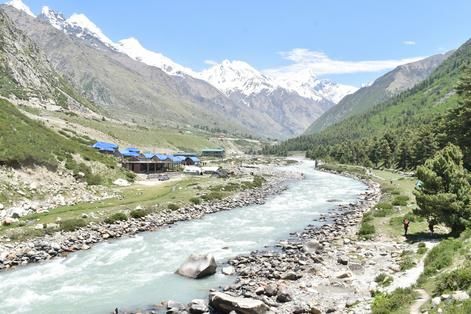
Baspa River
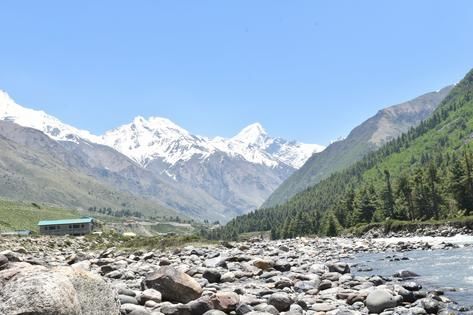
Baspa River
Day 3: Chitkul to Kalpa
If you are not feeling too tired of being on the road, it is better to go directly to Nako from Chitkul. If you want to break the journey, you can plan to stay in Kalpa. Kalpa is a small town near Reckong Peo, which is the headquarter of Kinnaur district. I'd not recommend staying in Kalpa since it was slightly noisy and concretish and not so natural. So maybe you can stay for another night in Chitkul and head to Nako/Tabo the next day.
Day 4: Kalpa to Tabo via Nako
Having spent the last 2.5 days driving, we realized that we will finally enter the Spiti Valley now. The green mountains are replaced by the brown ones and the brown ones give way to dark brown mountains. The twisty roads become less twisty alongside the river. Sutlej river will be your constant companion during this journey. Somewhere around the town of Pooh, you can say goodbye to your phone network and Internet for around 5 days. Only BSNL works in Spiti valley, and that too not everywhere. But it's not so bad to cut off from the rest of the world to find some peace. Isn't it?By this time, the roads are empty and driving is a pleasure. While driving from Kalpa to Tabo, there are several lookouts on the way. The first one is the Khab confluence where Sutlej merges with Spiti. So from now on, Spiti river will be your companion. Drive to Tabo was quite humbling. We saw gigantic mountains and valleys carved out by a tiny looking but mighty Spiti river. Nako is a small village at the mountain top. There are several cafes here where you can break for lunch. The views from the village are quite spectacular. There's a small lake in Nako that you can visit. After Nako, the road descends and you are welcomed by beautiful valleys. Near Sumdo, we took a detour to visit Gue village. It is a sleepy town on the border with China that has a preserved Mummy of a buddhist monk. By dusk, we reached Tabo and made ourselves comfortable in the guest house. Tabo has some great cafes. We particularly liked Kunzum Top cafe, for the variety and local flavor they offered. Tabo has an old and a new monastery. There are caves in the mountain besides Tabo, which were used by monks to meditate. The valley behind Tabo village is a delight to the eye. Even the clouds seem lazy and are floating idly below the mountain top.


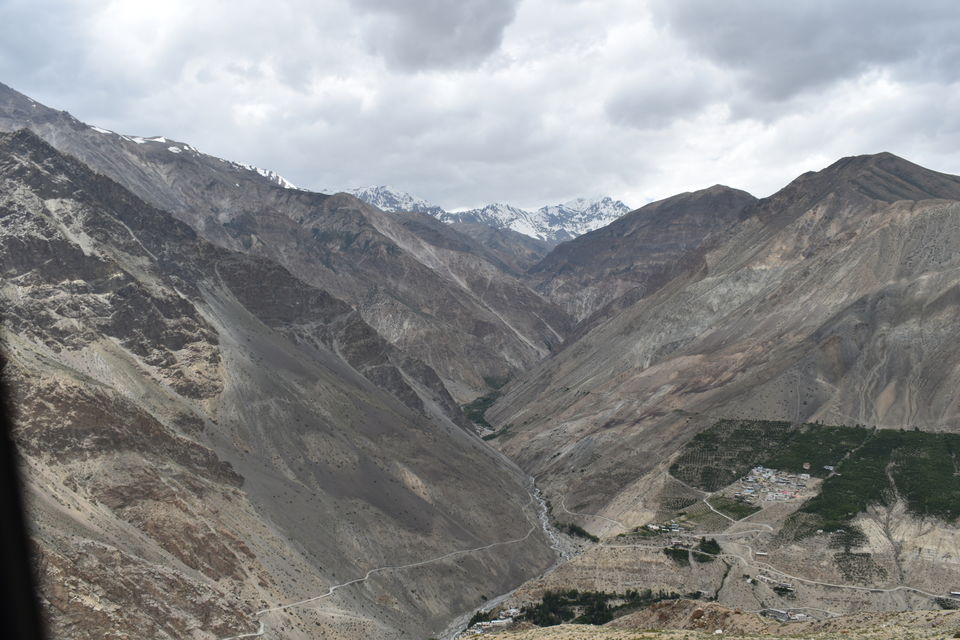


NakoNakoNakoNakoNako
Day 5: Tabo to Mud Village (Pin Valley) via Dhankar Monastery
This was the best drive of our trip. We had breakfast in the Kunzum top cafe and started for Mud Village. The views just keep getting better and better. The dramatic landscape was made of vast plains flanked by gigantic mountains on both sides. The meandering road carefully cut the scenery into two. Like us, the clouds were also traveling effortlessly from one valley to another, occasionally showering few drops. On this day, we had planned to go to Mud Village, which is the last habited village in the Pin Valley. The plan was to visit Dhankar Monastery on the way. The detour to Dhankar Monastery is truly gorgeous. From the heights, you can see a river delta formed by the merging of Spiti and Pin rivers. That was one of the best views of Spiti. Besides the monastery, another lookout here in the Dhankar lake. But reaching the lake involves a good 90 minute trek which is not so easy. The climbs are very steep somewhere in the middle, but the last 20 minutes are just walking on the plains. The lake was glacial in color and the trek was worth it. We relaxed, washed our faces in the icy cool waters and walked around the lake. After spending around an hour there, we climbed down to the point where we had parked our car. After having Maggis in the cafe outside the monastery, we resumed our journey to Mud village. I was particularly looking forward to visiting Pin valley, because of how colorful it looked in the pictures. To go to Mud, you need to cross the Pin river on a bridge and enter the national park. From now, Pin river accompanied us to the village. Mud is a very small village, with some homestays and couple of grocery shops. I'd recommend you try Tara guest house. The lady there served delicious food. Mud village is also the starting point of some trekking expeditions, the most famous of them being the Pin Parvati pass trek. During this 10 day trek, you can basically cross over the mountains and reach the parvati valley and Kasol. The next morning we started on this trek to explore the valley. I'd highly recommend you do this trek for 4-5 hours return and you won't regret it. You'll be able to see the colorful mountains of the Pin valley from a close range. In the magnificent scheme of things, being there was a humbling experience. We did not see a single soul during this trek and the views kept getting bigger and better. After spending a few hours, we came back to Mud around afternoon to have lunch and start our journey for the day.


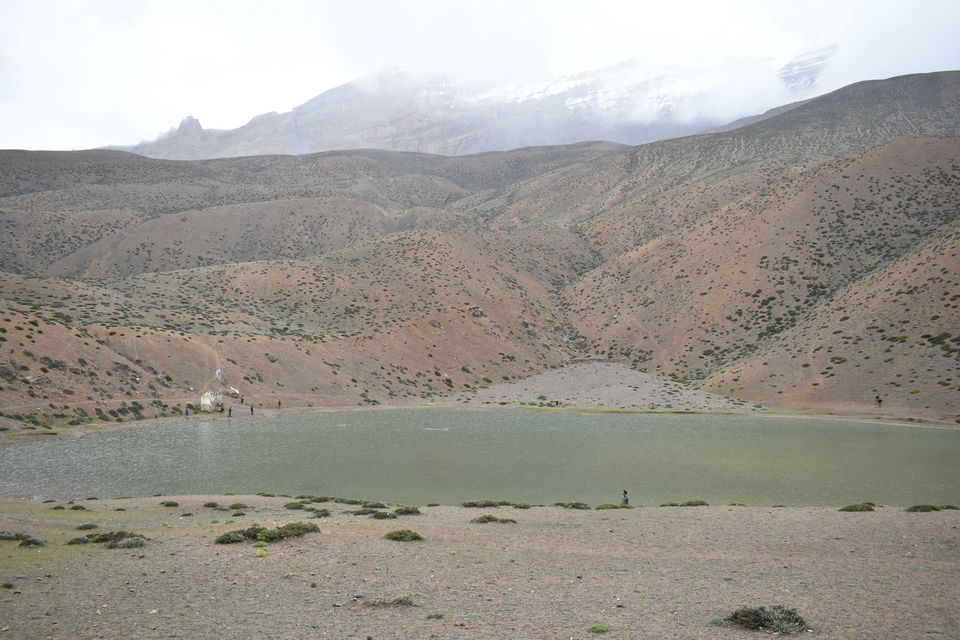
Dhankar LakeOn the way from Tabo to Mud VillageDhankar Lake
Day 6: Mud Village to Kaza
Mud village to Kaza is a 2 hour drive. Kaza is the commercial centre of Spiti valley. From Kaza, you can cross over to Manali when the road is open. When we went there, the road to Manali was still closed due to heavy snowfall. Kaza has lots of cafes, homestays and most importantly, a fuel station. It is the world's highest fuel station. So make sure to get your tank filled while you're in Kaza. There are several small towns that you can visit or stay in while in Kaza. We drove through Key monastery which is a famous sight in the valley. Then through Kibber village. We wanted to stay away from crowds, so decided to stay in Langza. Langza is a small village not too far from Kaza. We stayed in the Lara's Homestay here and it was our best stay in the entire trip. We booked two rooms on the top floor. The comfort and hospitality that Lara's Homestay provided surpassed our expectations. They served delicious dinner and breakfast and the view from the rooms was just breathtaking. I'd strongly recommend spending at least one night in Langza village while visiting Kaza. You can also visit Hikkim and Komik. Hikkim boasts of having the world's highest post office.



Mud VillageMud VillageView from Dhankar Trek
Day 7: Kaza - Chandrataal - Kaza:
Kaza to Chandra Taal lake is a 5 hour drive. Everyone warned us that it's almost impossible to drive to Chandra Taal in a hatchback since the road is terrible. Ultimately we gave up and asked the local taxi operators to hire a taxi for us. The taxis that run between Kaza and Chandra Taal are 4×4 Boleros that can withstand the extremely arduous terrain. But by the time we asked, it was already 11AM and the taxi guys said it's too late to go and come back the same day. And we didn't want to stay because we had to start our journey back to Gurgaon the next day, since Manali road was closed. So we decided to give it a try in our car itself and started for Chandra Taal around 12 noon. The initial 50 kms are smooth and picturesque. It is when you reach Losar when the madness begins. The road ascends to Kunzum pass which is covered in snow. The roads are basically inundated with water melting from snow. There are big stones and boulders scattered on the road, big enough to puncture your car's body from beneath and break it down. While descending from Kunzum pass, the water streams swell and you need to be very careful in maintaining the momentum of the car and not breaking it down or getting stuck between the stones. From Batal on the Kaza Manali road, you have to take a detour to reach Chandra Taal lake. It's a 14km road and takes 1 hours to reach there. This 14 km stretch was the worst road I've ever seen in my life. Along with the big boulders, muddy road and the big pits, there are at least two water streams gushing down from the mountains across the road. It is not uncommon for cars to get stuck there. So be very careful while crossing these streams. Around a kilometer before the parking site, there are tents where you can choose to stay for the night. At around 5PM, we reached the Chandra Taal parking site. From there, it is a 10-15 minutes trek to the lake. The first thing that strikes about the lake is its color. It is deep blue in color surrounded by mountains. The view is just amazing. We had just half an hour to see the lake because we had to go back to Kaza the same evening. And it's not a great idea to drive on those roads after dark. So after spending some time at the lake, we started back towards Kaza. After battling those streams and taxing roads, we finally reach Key around 10:30PM where we had planned to stay the night. I'd not recommend taking your hatchbacks to Chandra Taal because there's a high possibility of the car breaking down or getting stuck. If you have a 4×4 with good ground clearance, you have a better chance. Our car survived because I have a thick underbody steel plate which protected the car belly from the rocks.



LangzaChandrataalLangza
Day 8: Kaza to Rampur Bushahr
After an adventurous day in Chandra Taal, we rested the night at Key and started next morning on the way back to Gurgaon. We planned to reach Rampur Bushahr and stay the night there because of the distances. It took around 8-9 hours to reach Rampur Bushahr. So basically we had to backtrack our route minus the detours. This is the day when we got back into the network zone after 5 days.
Day 9: Rampur Bushahr to Gurgaon
With lots of memories and already nostalgic, we drove back to the civilization on day 9 and reach Gurgaon by midnight.



